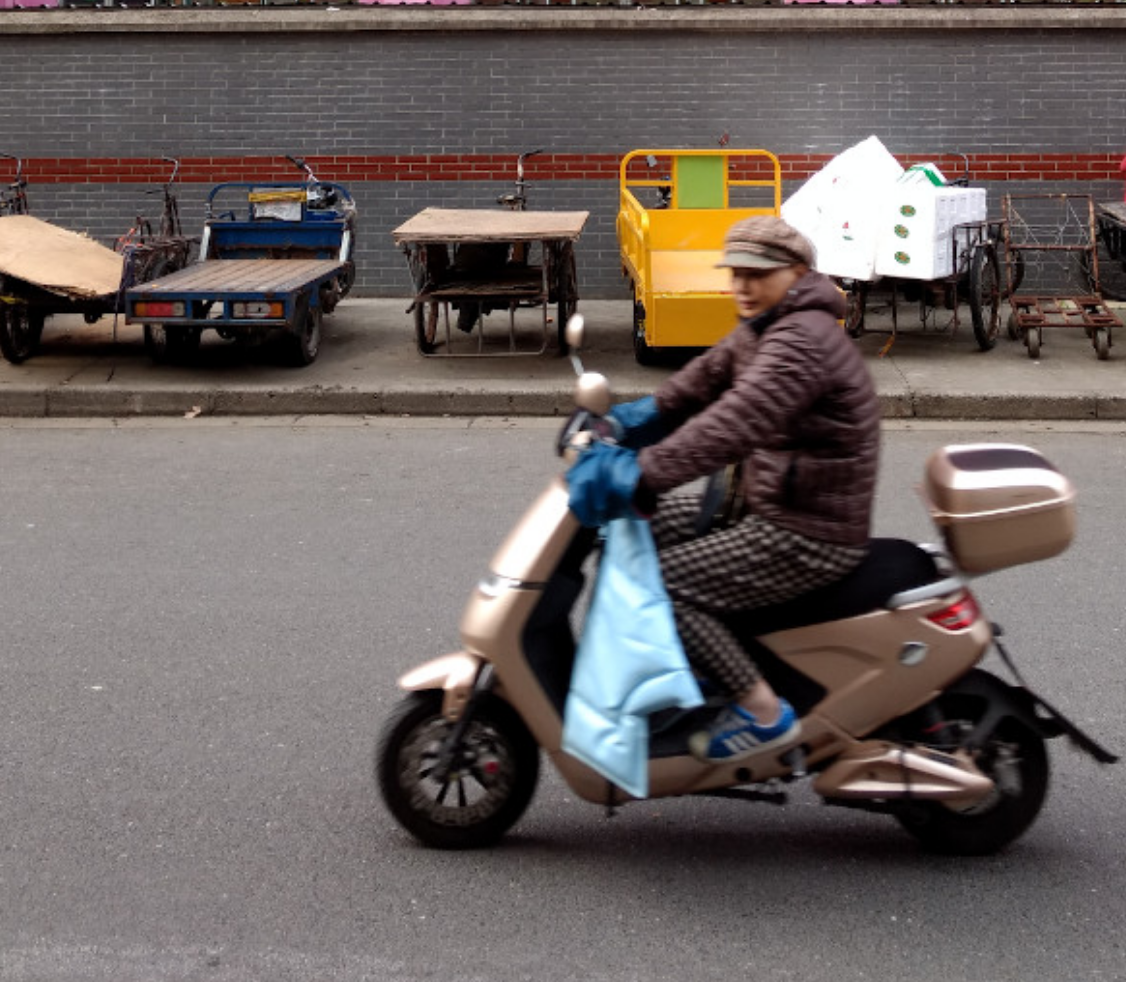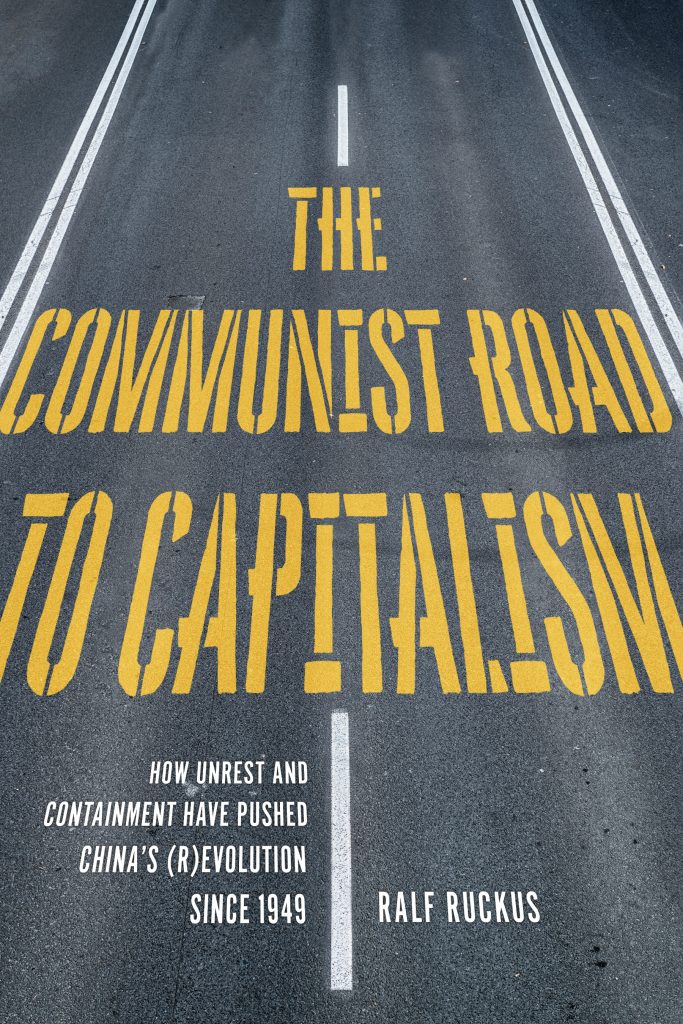By Ralf Ruckusu
nqch.org
March 29th, 2020
This article on China’s population policies and women’s refusal to serve as birth machines for the CCP’s development program first appeared in the Swiss weekly WOZ in German on January 23, 2020. Meanwhile, the ‘coronacrisis’ has hit (not just) China, and it is unclear whether the scraping of official birth limits will happen this year. The women’s struggle against the state’s populations policies and for more control over their lives is still on and might even intensify in the face of even more state interference into people’s personal lives.

The regime of the Chinese Communist Party (CCP) tries to avoid a demographic crisis and asks the women in the country to have (more) babies – without any success. It is the patriarchal family order itself that women increasingly criticize.
Observers expect that the One-Child-Policy introduced 40 years ago will be scrapped this spring.[1] For women in China, loosening the rigid control of family planning by the state would mean a turning point.
The CCP leadership is trying to avoid a demographic crisis. According to data recently published by the National Statistic Bureau, in 2019, the number of births fell to the lowest level in decades.[2] The fertility rate is so low that the population will soon shrink substantially. And the workforce or working population has been decreasing already for years.
Many women refuse to get more than one child, and even the introduction of the Two-Child-Policy in 2016 has not led to the desired birth increase. In “Birth Strike. The Hidden Fight Over Women’s Work,” the author Jenny Brown describes the phenomenon of an informal “birth strike” as a reaction of women “to intolerable working conditions.”[3] Recently, Chinese local authorities have tried to break this “strike” – so far unsuccessfully.
What is at stake is nothing less than the future of the country: without the baby boom desired by the state, both the labor shortage and the overageing of the society threaten to aggravate. This could choke further economic development.
Rigid Regulations
The expected turnaround in the state’s birth policies and the demand for more children entail a historical irony. In the late 1950s and early 1960s, part of the CCP had also demanded that women get many children – at the time for the construction of socialism. However, starting in the early 1970s, the leadership increasingly tried to reduce populations growth as well as the economic burdens connected to it. Thus, local cadres were made responsible for the compliance with prescribed baby quotas.
In the mid-1970s, the leadership started a campaign for later marriage, longer periods between births, and less children. Subsequently, the fertility rate fell sharply: from 5.7 (1970) to 2.6 (1980). In the same period, the birth rate decreased from 33.5 children per one thousand inhabitants to 18.2.[4]
At the end of the 1970s, the regime started comprehensive economic reforms, dissolved the village communes, and distributed the land to peasant families. However, after those changes, the CCP leadership feared the peasants would take advantage of the relaxation of state control and have more children again. Strict regulations were introduced in 1979, the so-called One-Child-Policy, and they were rigidly enforced – with campaigns, forced abortions and sterilizations, controls of contraceptive methods, and repression.
This was largely successful in the cities, because transgressions could lead to high fines, the loss of employment, or even the right to live in the city. Moreover, the regulations were rather accepted because, due to the state-run social care systems in the cities, the number of children (and their gender) were less important for social protection and security. In rural areas, on the other hand, families were much more resistant against the new rule from the very beginning – especially if their first born was a girl. According to patriarchal notions in China, only sons continue the family tradition. Daughters become part of their husband’s family after marriage and are ‘lost’ for the own family as labor power and support for the elderly.
The documentary film ‘One Child Nation’ by the US-Chinese filmmaker Wang Nanfu shows how state cadres and medical teams bloodily crushed the resistance against the rule.[5] Wang’s interview partners from the countryside describe how, since the 1980s, people not only got punished and their houses destroyed, but women were also brutally forced to have (late) abortions and sterilizations. At the same time, villagers killed many female fetuses and newly born babies or abandoned them somewhere.
In the mid-1980s, the regime reacted to the discontent and resistance on the countryside. As it had to fear losing control over the villages, it allowed rural families to have a second child if the first one was a girl. The regime introduced more exceptional provisions for ‘minorities,’ hence the term ‘One-Child-Policy’ is actually misleading. The restriction to give birth only to one child ultimately only applied to about one third of the women in China.
Unintended Effects
Even though the regime claims to have ‘saved’ 400 millions births,[6] the ‘success’ of the One-Child Policy is questionable at least. For example, fertility rates had already fallen significantly before the introduction of the rigid policy. And in comparable countries like South Korea or Thailand they fell similarly without coercive measures – through increased urbanization, better education, and economic improvements.
Starting in the 2000s, the unintended effects of the One-Child Policy became increasingly clear. Gender-selective abortions and femicides led to a surplus of males. The gender distribution of births has been between 115 and 130 boys per 100 girls, depending on the province.[7] In 2017, there were 32.7 million more men than women in China.[8] In 2010, an estimated 13 million ‘black children’ existed – about one percent of the total population.[9] As illegals, they had not been registered to avoid fines. They are not entitled to receive, for instance, education or social benefits.
In recent years, the number of births has fallen significantly, which is also a consequence of the ever decreasing number of women in childbearing age. In 2019, there were only 14.6 million births, compared to 23.9 in 1990.[10] The birth rate was only 10.5 per one thousand inhabitants, reaching the lowest level since 1949.[11][12] Due to the low number of births, one crucial source of economic growth might dry up: fresh (and preferably ‘cheap’) labor power.
The working population is also shrinking because the regime does not allow any significant number of migrant workers enter the country. Furthermore, it has not yet dared to raise the retirement age (60 years for men, between 50 and 55 for women).[13] Nowadays, the increasing ‘overaging’ of society is exacerbated by the increased life expectancy in China.[14] In 2017, the proportion of people over 60 was about one sixth, in 2030, it is expected to be around one quarter and in 2050 around one third.[15] Fewer and fewer younger people have to sustain more and more older people, without an adequate pension system – especially in rural areas.
The Regime’s Sexism
For years, the CCP leadership has tried to adapt its population policy. In 2013, it allowed parents who come from one-child families to have two children. In 2016, it introduced the Two-Child Policy, and it is expected that by 2020 the limitation will be completely abolished because all previous measures to increase the number of births have ultimately failed. In some areas, local CCP leaders have launched campaigns for more children and appealed to the ‛patriotic duty’ of Chinese women to give more children to the ‘nation.’ As early as 2018, the People’s Daily wrote: “The birth of a baby is not only a matter of the family itself but also a state affair.”[16] Local authorities are trying to solve the lack of children through material incentives, parental leave, and propaganda, and some have restricted the right to abortion.
The CCP leadership continues to see women as birth and care machines serving the developmental regime. Under the current chairman Xi Jinping, ‘Confucian values,’ i. e., sexist social concepts, are emphasized, marriage and family are promoted as central pillars of society, and women are increasingly tied down to a ‘traditional’ gender role and care work in the family – even by the official Women’s Federation. This is backed up by a rigid heteronormative sexual morality spread by state media.
In the economy, the female employment rate, which had still been around 73 percent in 1990, fell to about 60 percent in 2018.[17] Besides the place of (rural or urban) origin, gender is the main factor for income inequality which is very high in China. In 2018, women earned only 78 percent of what men earned on average, and they are still discriminated against when hired because they could be absent due to reproductive work or childbirth.[18]
The patriarchal pressure in the families remains: young women are supposed to marry in their mid-20s and have children in order to ‘continue the family tradition’ – and this, above all, by giving birth to a son. Meanwhile, unmarried women over 27 are stigmatized as ‘leftover women.’ And women are still frequently exposed to sexualized violence in everyday life in China.
Forms of Rebellion
Open and organized women’s resistance in China is dangerous. Wherever feminist activist stand up for women’s interests outside the state’s official representation channels and defend themselves, for instance, against sexualized violence, the state reacts with harsh repression. In 2015, the ‘Feminist Five’ were arrested after they had planned actions against sexual harassment of women.[19] And in 2018, the online platform ‘Nüquan Zhisheng’ (女权之声; feminist voices) was taken offline after it had launched a #metoo-campaign.[20]
There are also other forms of rebellion. Many women in China question the Confucian family order and try to improve their bad situation through ‘marrying up into better circles,’ they postpone marriage, prefer to remain unmarried, or divorce faster if they have problems in their relationships.[21] The number of registered marriages decreased from 13.5 million in 2013 to 10.1 million in 2018, the number of divorces increased significantly, from 1.3 million in 2003 to 4.5 million in 2018, and they were mostly filed by women.[22][23]
Above all, many young women in China don’t want to serve as reproductive machines and give birth to, bring up and care for the demanded (two) children. Social and geographical backgrounds play an important role here: the (relatively few) women of the urban middle class could afford a second child, the (much more numerous) migrant and rural women would not be able to afford it or would have difficulty doing so because of the high costs of housing, education, and health care.
Many don’t want more than one child anyway, because they do not want to do the care work for a second child – or they get it later because they want to first take care of their job training and career. This explains why there has not been any baby boom despite the relaxation of birth control and campaigns for more children. The CCP regime will continue to have problems with the birth strike and women’s resistance.
Ralf Ruckus has been active in social movements in Europe and Asia for decades and publishes texts on social struggles in China and elsewhere. He edits gongchao.org and blogs on naoqingchu.org.







